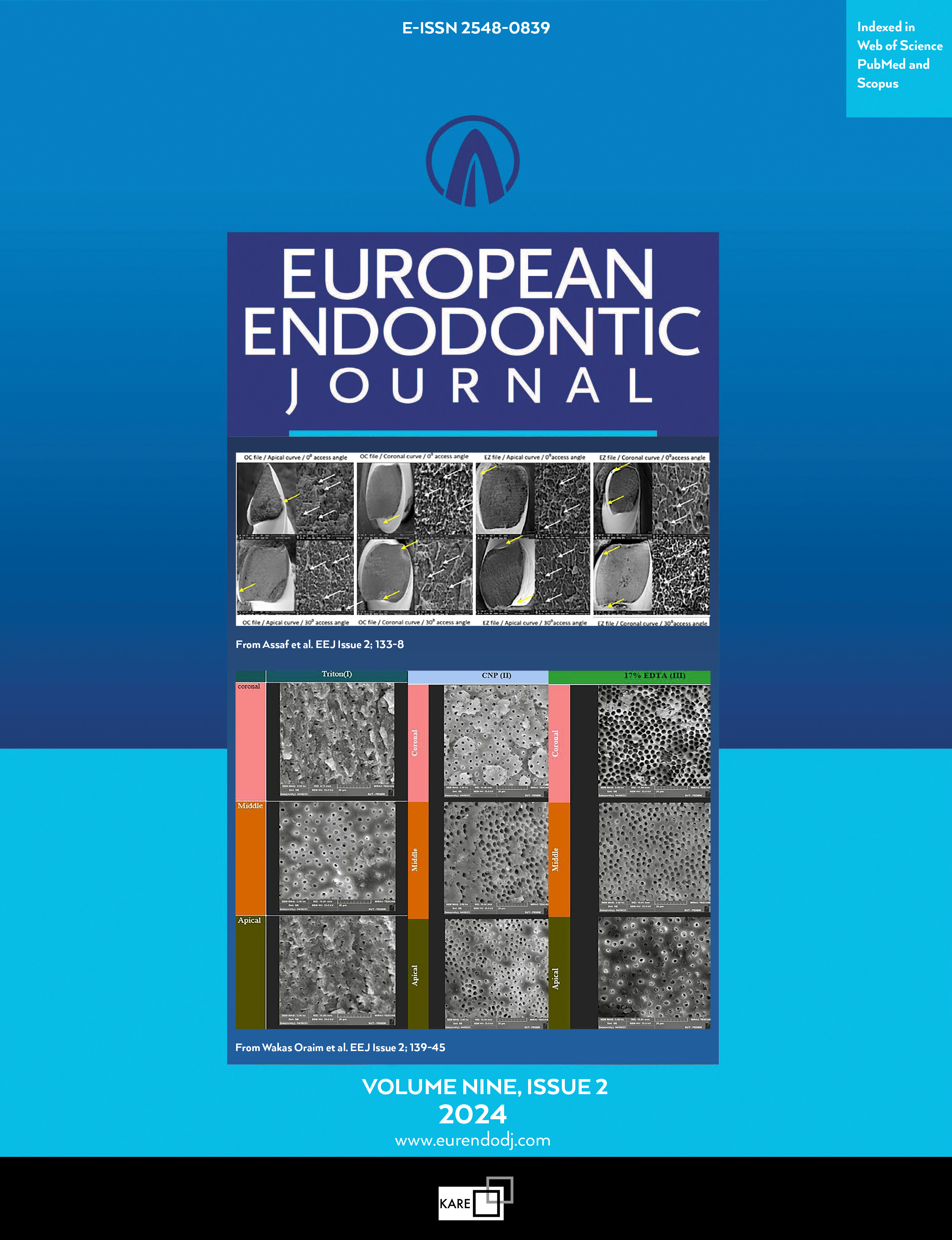Metrics
2022 IMPACT FACTOR
5 year Impact Factor
Eigenfactor
2022 CiteScore
Journal Citation Reports (Clarivate, 2023)(Dentistry, Oral Surgery & Medicine (Science))
Evaluation of Torsional Resistance and Bending Stiffness of Coronal Flaring Nickel-Titanium Instruments
Theodoro Weissheimer1, Murilo Alcalde2, Julia Barrionuevo Cortez2, Ricardo Rosa1, Rodrigo Vivan3, Pedro Henrique Souza Calefi3, Marco Antonio Hungaro Duarte3, Marcus Vinicius So11Department of Conservative Dentistry, Federal University of Rio Grande do Sul, Porto Alegre, Brazil2Health Science Center, Sacred Heart University, Bauru, SP, Brazil
3Department of Operative Dentistry, Endodontics and Dental Materials, Bauru School of Dentistry, University of São Paulo, Bauru, SP, Brazil
Objective: The aim of this study was to evaluate the bending and torsional resistance of the following instruments: Mtwo 25/.07 (MT - VDW, Munich, Germany), Navigator W-XN 25.07 (WXN - Wizard Navigator, Medin, Nové Město na Moravě, Czech Republic), ProTaper Universal SX 19/.04 (PSX - Dentsply Tulsa Dental Specialties, Tulsa, USA), MK Orifice Shapper 17/.08 (OS - MK Life Medical and Dental Products, Porto Alegre, Brazil) and MK Sequence 17.12 (MKS - MK Life Medical and Dental Products, Porto Alegre, Brazil).
Methods: One hundred instruments were used (n=20). Resistance to bending (n=10), torque and angular deflection (n=10) at the failure of new instruments were measured according to ISO 3630-1. Metal mass volume at 3 mm from the tip was evaluated using micro-computed tomography (micro-CT). The fractured surface of each fragment was examined by scanning electron microscopy (SEM). Data were analysed using 1-way analysis of variance and Tukey tests.
Results: Torsional resistance values of MK Sequence were higher than the other groups (P<0.05). No differences were observed among MT, WXN and OS (P>0.05) and PTS, which presented the lowest values (P<0.05). MT showed the highest angular deflection (P<0.05). WXN and PSX presented no significant difference (P>0.05). PSX and OS also showed no significant differences (P>0.05). MKS instruments had the lowest angular deflection values (P<0.05). There were significant differences among all the groups in bending stiffness test (P<0.05), but PSX had the lowest torque to bend (P<0.05). MKS had the larger metal mass volume at 3 mm from the tip (P<0.05). SEM analysis showed similar and typical features of torsional failure for all instruments tested.
Conclusion: In conclusion, MK Sequence 17/.12 had the highest torsional fracture resistance. Mtwo 25/.07 showed higher angular deflection capacity, and ProTaper Universal SX the 19/.04 lower bending stiffness. (EEJ-2020-12-276)
Corresponding Author: Theodoro Weissheimer
Manuscript Language: English
(351 downloaded)


